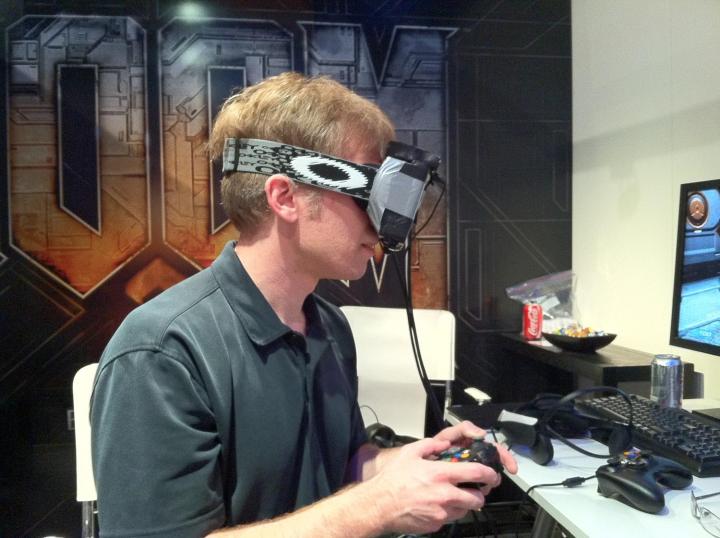
John Carmack, co-founder of id Software, programming legend, and a guy that became an award winning aeronautical engineer because he was bored, has been announced as the new Chief Technological Officer for Oculus VR.
If you don’t know who John Carmack is, and if you haven’t heard of Oculus VR or its product Oculus Rift, then you may be in the wrong article. Perhaps you’d like to check out our cars section. Our photography section is lovely as well. For gamers though, the confluence of Carmack and Oculus VR is enough to stop hearts.
Although Oculus VR is headquartered in Irvine, CA, Carmack will work out of a newly announced office in Dallas, Texas, which should make life easier for Carmack. Along with his new duties at Oculus VR, Carmack will remain a Technical Director at id Software, which is located in the Dallas suburb of Mesquite, Texas.

Carmack’s relationship with Oculus VR goes back to the very beginning. When Palmer Luckey first designed the virtual reality headset, he showed it to Carmack, and impressed him so much that the programmer abandoned his own research into a 3D VR headset and instead began to support Luckey. At E3 2012 in June, Carmack announced that the Doom 3: BFG Edition was on the way, and that it would feature 3D support. He then went on to introduce a rough prototype of Luckey’s headset. Following E3, Luckey went on to form Oculus VR and started a Kickstarter campaign to raise $250,000. It reached that goal in four hours, and within 36 hours it surpassed $1 million. It eventually ended up raising $2,437,429 and has been one of the most talked about items in gaming for over a year now.
Dev kits soon began to go out to people that contributed $300 or more, and in September, the kits went on sale to anyone, selling at a rate of 4 to 5 a minute for the first several days. The kits on sale and the kits that went to backers were both expected to come with the id’s Doom 3: BFG Edition, although the game wasn’t ready at the time (it included a voucher for the game).
The kits on sale now are still prototype models though, and still use SD displays. An HD model was shown at E3, but the retail version won’t be released until next year. Carmack’s inclusion on the project opens up a lot of possibilities between now and then.
“To build the best virtual reality experience, we’re putting together a team of the brightest minds, and John Carmack is at the top of the list. It’s a true honor,” Brendan Iribe, co-founder and CEO of Oculus VR said in a press release. “A pioneer of 2D, 3D, and now VR, John continues to define the future of computer graphics and gaming. We share John’s commitment to providing the world with open platforms that inspire innovation and creation.”
For Carmack it’s yet another technical challenge for him to embrace. After helping to co-found id Software, he was instrumental in the development of 3D graphics. He was also the driving force behind the five influential id Tech engines, and despite the move over to Oculus VR, he will still be involved at id on the technical side of things.
“John has long been interested in the work at Oculus VR and wishes to spend time on that project,” Bethesda, the video game publisher that now owns id, tell Digital Trends. “The technical leadership he provides for games in development at id Software is unaffected.”
Carmack is also a proponent of open source software and opposes software patents, a mentality shared by Oculus VR, who recently claimed that it was looking for a business model that would allow them to make the Oculus Rift free.

The competition is split into two levels. Armadillo succeeded in the first level, which required that a vehicle land on a 10 meter surface, winning the company $350,000 that NASA paid out. Armadillo completed the second level the following year by landing on a simulated lunar surface, and was awarded $500,000 in the process. Following the crash of a test rocket earlier this year, Armadillo went in to “hibernation,” but Carmack has stated that he is just looking for outside investors to help restart the company so it can continue in its goal of creating an orbital vehicle.
With Armadillo currently not taking up his time (or at least not as much time), Carmack is free to focus on his new duties at Oculus VR.
“The dream of VR has been simmering in the background for decades, but now, the people and technologies are finally aligning to allow it to reach the potential we imagined,” Carmack said via press release. “I’m extremely excited to make a mark in what I truly believe will be a transformative technology.”


